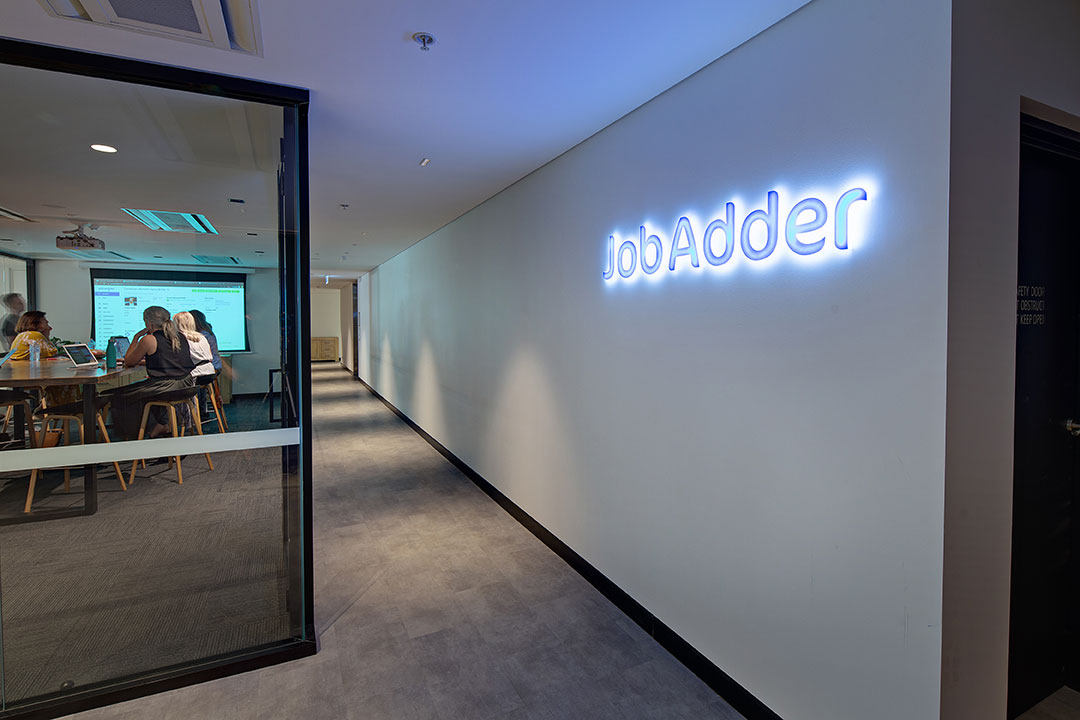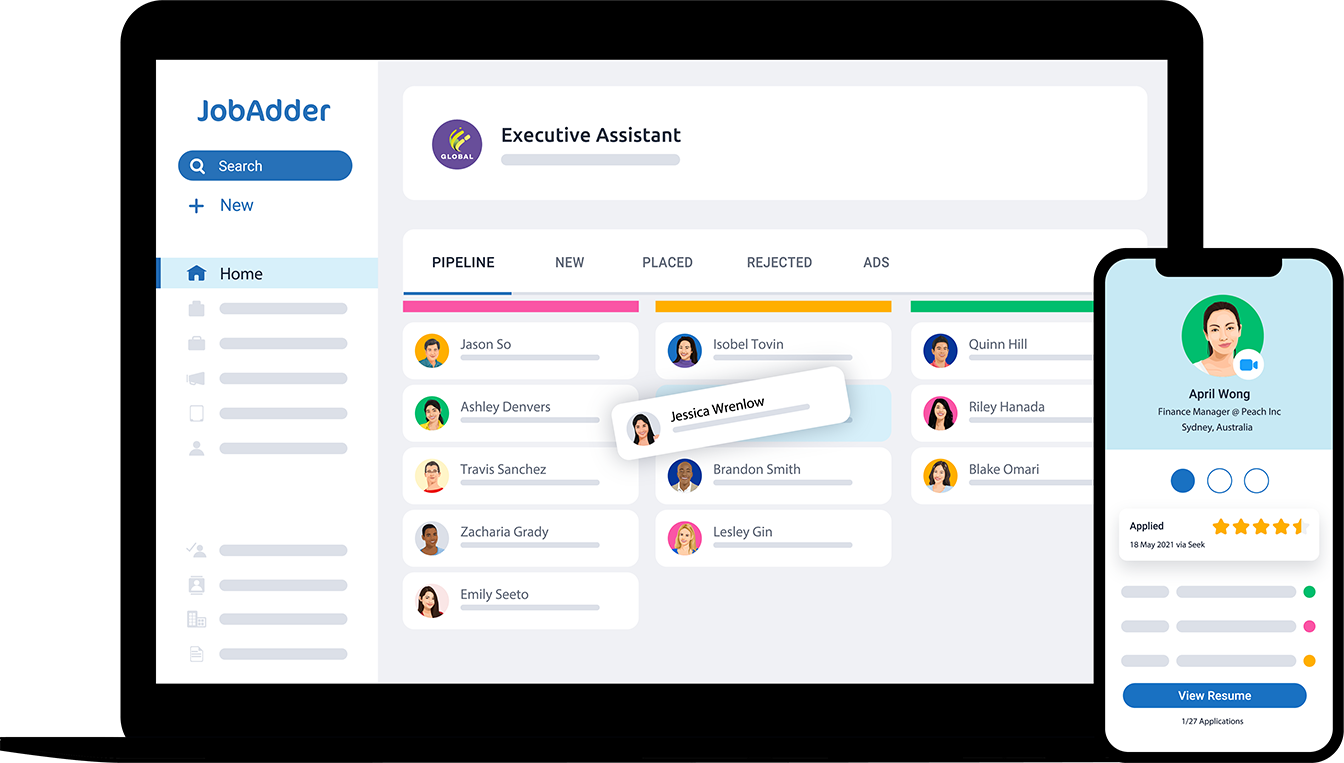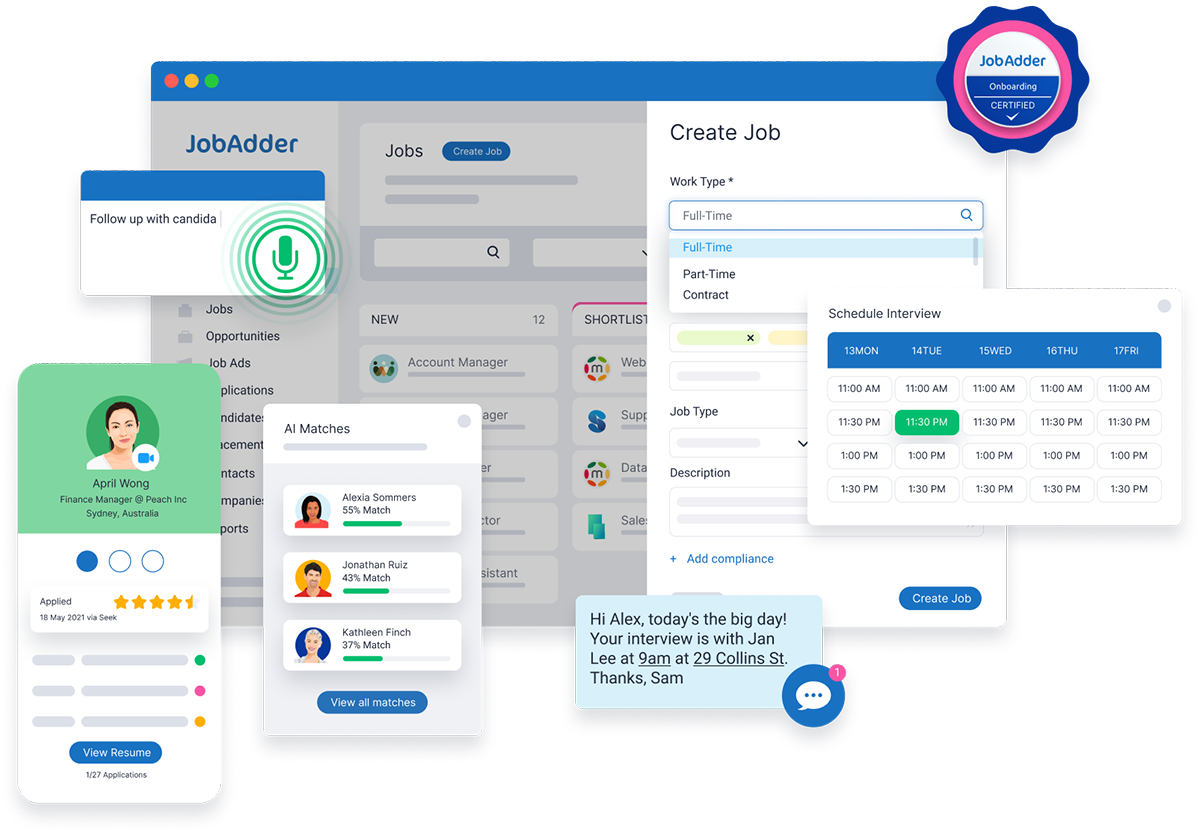
JobAdder empowers agents to focus on complex queries with Zendesk AI
JobAdder, a global recruitment platform, has transformed its customer support operations with Zendesk AI, enabling agents to resolve high-priority tickets in 15 minutes and reduce low-priority ticket handling time by 70 minutes. By blending AI with human-centered support, JobAdder empowers its agents to focus on complex issues while AI handles simpler queries—ensuring an exceptional customer experience reflected in consistently high CSAT scores.

“Instead of being told to read an article, our customers now get an immediate, precise answer. The Zendesk AI agent also gives customers baseline knowledge to ask more informed follow-up questions.”
Mark Lingard
Head of Customer Experience - JobAdder
“Zendesk AI has significantly improved our efficiency. We've seen a drop in our average ticket handling time by one and a half minutes. Agents can use the summary feature to validate their understanding of a customer’s request and offer a solution much more quickly.”
Mark Lingard
Head of Customer Experience - JobAdder
Industry
Information Technology
Headquarters
Australia
Overall time-to-hire reduced with JobAdder
50%
96%
CSAT
15-minute
response time for high-priority tickets
70-minute
reduction to resolve low-priority tickets
JobAdder is a Candidate Relationship Management Applicant Tracking System (CRM ATS) designed to help recruitment professionals focus on building meaningful connections with candidates, clients, and colleagues. Originally founded in Australia, it has grown into a global company with customers spread across multiple regions. JobAdder has helped its customers reduce job ad spend by 65 percent, expenses by $1.5-$2 million, clicks per task by 75 percent, and overall time-to-hire by 50 percent.
Fifteen years ago, JobAdder migrated to Zendesk Suite to streamline its customer support operations. “Zendesk became our central hub to track everything in one place, rather than managing individual support instances for different regions,” recalls Mark Lingard, head of customer experience at JobAdder. This setup has enabled the company to manage about 5,000 tickets per month with a team of 29 agents, serving customers six days a week across email, support center, social media, and phone.
As JobAdder continued to grow, it saw the emergence of artificial intelligence (AI) as an opportunity to take its customer experience to the next level. “We didn’t just want to use AI for the sake of it; we wanted to give our customers the ability to find answers as quickly as possible,” Lingard explains. “The challenge we faced, just like every company, was capacity. No matter how quick our first reply time is, we’ll never be as quick as an AI agent. So, we began the search for a good fit.”

AI with a human touch
When Zendesk introduced its native AI solution, already integrated into Zendesk Suite, JobAdder found the perfect fit. “We’re a highly customer-focused organization, and we want our support team to reflect that,” explains Lingard. “We strive to blend what I call ‘human-led AI,’ which means using AI not just for the sake of it, but to genuinely help our customers. Our vision isn’t to push everything down the AI route and remove the human element. Quite the opposite—we want to be more available to spend more time on one-on-one engagement. Thankfully, Zendesk AI feels very customer-focused. There’s enough customization available to maintain our human-led element while using AI to make our team more efficient.”
JobAdder worked closely with its Zendesk account team to navigate this transition. “The Zendesk team has been great at keeping us informed, understanding what we’re trying to achieve, and showing us what can help our goals,” Lingard describes. “Yet, one of the most remarkable things about Zendesk AI is it’s pretty much a switch-on process—there was no lengthy implementation.”
Still, JobAdder put a lot of thought into designing its chatbot, making it customer-friendly and enabling users to raise a ticket as easily as possible. “In the spirit of making AI customer-centric, we’ve also been careful to avoid frustrating repetitive bot responses like, ‘Sorry, I didn’t understand your question; please ask again,’” Lingard adds.
Effective prioritization
JobAdder decided to direct customers away from email and toward other channels, where they could better prioritize and respond to tickets. “The problem with emails is that you can’t prioritize them—they come into a queue as first in, first out,” shares Lingard. “So, we made a calculated decision to encourage customers to use channels where they can set the priority themselves. We trust our customers to raise the ticket the correct way, and I think they appreciate the fact that they can do that. A lot of support teams don’t provide that option.” The strategy worked and email ticket submissions dropped from 36 percentto 26 percent, while web increased from 44 percent to 52 percent.
Today, Zendesk AI agents lead the charge on every incoming query. In the past, a virtual agent would return articles based on keyword matches, requiring customers to read lengthy articles. Now, the Zendesk AI agent digests the customer’s question, scans 800 articles, and combines relevant snippets from appropriate articles to provide an immediate response. Lingard highlights, “We’ve seen tickets where customers asked two questions in one, and the AI agent was able to digest both and provide a perfect response.” This saves customers time and gives them baseline knowledge to ask more detailed follow-up questions. “Even though we’ve been using Zendesk for 15 years, the implementation of AI has made it feel like a brand-new platform, which is exciting. AI has given our customers the ability to self-serve in a much more positive way,” Lingard adds.

Empowering the agents
For cases when the user requests to speak to a human, JobAdder agents use a number of Zendesk features to speed up the conversation. For example, the AI assistant summarizes the contents of the ticket. “A more complex ticket may take 20 minutes to digest. The summary feature helps agents quickly understand the context of a customer’s query,” Lingard says. This feature has also made it easier to onboard new agents, helping them understand ticket content faster and reduce the need for internal consultations.
AI also helps JobAdder agents refine their replies. “If you’re not a wordsmith, having the ability to essentially have AI check your tone and grammar is a great feature,” Lingard explains. “We still encourage our team to present information in their own way and have a unique voice—we value individuality and hire people for their personalities. But AI acts like a safety net, helping them feel more secure in their communications.”
The sentiment feature has also proven effective for prioritizing tickets. When a ticket comes in with negative sentiment, Zendesk automatically boosts its priority to ensure quick resolution.
Finally, JobAdder uses AI to analyze gaps in its content, making it even easier for customers to obtain information from the AI assistant or the customer center articles. “This has been instrumental in refining our user journey and ensuring our content is more AI-ready and aligned with customer needs,” Lingard adds.
Fast, dedicated service
Thanks to these features and a well-informed AI agent that diverts simpler queries, support staff can focus on more intricate interactions and resolve issues faster. “We respond to our urgent tickets in 15 minutes, down from 16 last year, and high-priority tickets are resolved in 26 minutes, down from 27 last year,” adds Lingard. “The biggest improvement is in our low-priority tickets, where we’ve taken 70 minutes off: on average, we’re getting back to customers on low-priority tickets within a two-hour time frame.” All these changes have enabled JobAdder to maintain high CSAT scores, which are currently at 96 percent.
Looking ahead, JobAdder plans to advance its AI capabilities and refine its customer support toolset. For example, it plans to conduct a complete audit of its 800 articles with the gap analysis feature. It also wants to embed Zendesk AI reporting features into its workflows to better monitor its performance. Down the line, the company is also considering integrating Poly AI into Zendesk to enable customers to have a phone conversation with a bot. Lingard sums up, “Our main goal is to maintain a balance between offering customers AI-driven options for quick answers while keeping that essential human connection for those who need or prefer it. We already have a solid foundation to move forward. The future is even more exciting.”